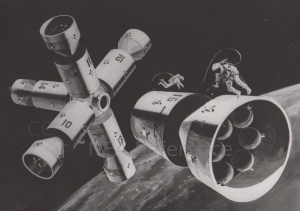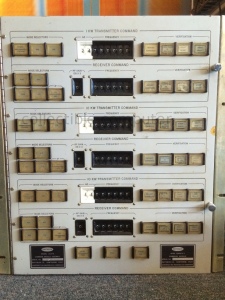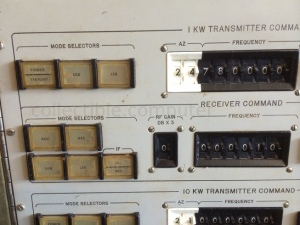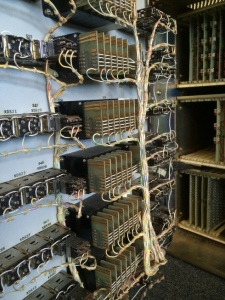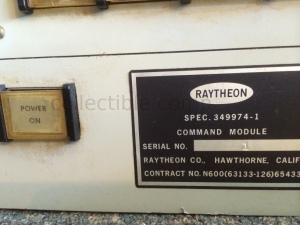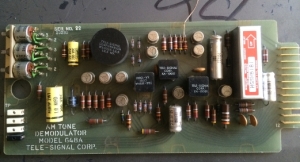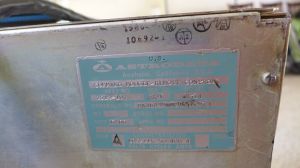During one of the most frigid moments of the Cold War, LBJ authorized a classified $1.5 billion, military orbiting laboratory called Project-MOL. It could photograph ICBM sites in the Soviet Union at high resolution. Douglas spearheaded intercontinental warfare from space designing a station to conduct planetary warfare on a massive scale.
Previously, only three pieces of the cancelled project have ever been discovered. The Gemini-B, a highly modified military mock-up using a previously flown capsule and two blue space-suits found in a locked museum room at Kennedy Space Center.
“NEA Reference” marked on back dated 12/66.
Add to the list a fourth, custom modified, ground computer unit used to issue the spacecraft digital commands! I call it Astro-Ray #1, packed with 56 Astrodata computer boards, and weighing in at over 100 lbs. It is Raytheon Serial #1. Astro-dated 6/66.
Only 20 years old when the MOL test flight released three satellites and successfully returned to earth, a moon-sized planet killer called the Death Star was written into George Lucas’ first draft of “Adventures of Luke Starkiller – The Star Wars”. Fox legal had a provision in the contract that Lucas could not use “Luke Starkiller” in any of his own movies.
Stretch version of modified Gemini remote #1 for MOL – added US-band and frequency counter for laboratory module. Re-entry transponder has own power reset.
Experimental unit combines Astrodata (NASA data acquisition) and Raytheon (Missile type board)
Paper trail for unit is classified in giant weapons contract called N600. N600 has progress reports on thousands of different parts from Allied to Zinc metallurgy.
Navy radio expert told me 10KW transmitter weighed 3 tons.
Astrodata command module remote is modified for Project-MOL on 6/66. Only white hulled ship in Navy, S.S. LaSalle is retrofitted for special mission in September 1966 in Norfolk.
Petty Officer 3rd Class on La Salle to photograph mission identified Astrodata cards and frequency counters as project MOL. Companion Astrodata countdown box using nixie tubes was also present.
